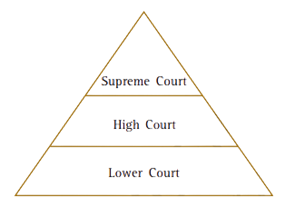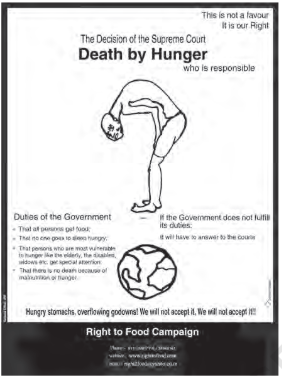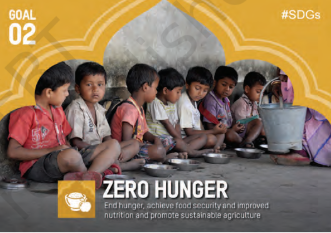NCERT Solutions for Chapter 4 Judiciary Class 8 Questions and Answers - Download FREE PDF
FAQs on NCERT Solutions for Class 8 Social Science Civics Chapter 4 Judiciary
1. Where can I download NCERT Solutions Civics Chapter 4 Class 8?
The Class 8 Civics Chapter 4 Questions and Answers can be downloaded from the official website of Vedantu or the Vedantu mobile application.
2. How can NCERT Solutions Civics Chapter 4 Class 8 help me?
You can download the NCERT solutions and practice all the questions to gain in-depth knowledge about the topics and boost your prep for exams.
3. Can I score good marks in the exams with Class 8 Civics Chapter Judiciary?
Yes, if you practice the NCERT Solutions regularly and include the solutions in your study material, there is no doubt that you can score high marks in the exams.
4. How to practice the given solutions for Class 8 Civics Chapter Judiciary?
Download the notes and practice every single day of Class 8 Civics Chapter Judiciary. If there are any doubts about the chapter, rely on these helpful notes. Make sure that you revise the topics frequently to keep the concepts clear.
5. What can students learn from the solutions to Class 8 Chapter 4 Political Science?
With Class 8 chapter 4 Political Science answers, students learn about the judiciary's organisation and functions, its role in protecting citizens' rights, and the importance of judicial independence in maintaining democracy and justice in India.
6. What function does the judiciary play in Chapter 4 Judiciary Class 8 question answer?
The judiciary interprets and upholds laws, ensuring that justice is done. It resolves issues among individuals, organisations, and the government. It also protects citizens' rights by ensuring that laws are carried out fairly. In addition, the court serves as a check on the authority of both the executive and legislative branches. You can download the free df of Class 8 Civics Chapter 4 Questions and Answers on Vedantu’s website.
7. How does India's court ensure the protection of fundamental rights in Chapter 4 Judiciary Class 8 question answer?
The judiciary upholds fundamental rights by hearing cases and issuing orders to enforce them. In Chapter 4 Judiciary Class 8 question answer has the authority to strike down legislation or take acts that conflict with constitutional guarantees. Courts can issue writs to protect individual rights. This method enables citizens to seek justice when their rights are damaged.
8. What is the importance of judicial independence in maintaining the rule of law in Class 8 Judiciary question answer?
In Class 8 Judiciary question answer Judicial independence allows judges to make decisions based only on the law and proof, free of external influence. This guarantees justice and equality in legal decisions. An independent judiciary promotes the rule of law by ensuring justice for all. Class 8 Judiciary question answer prevents excesses of authority and guarantees that justice is consistently applied.
9. Could you explain the distinction between civil and criminal cases in The Judiciary Class 8 Questions and Answers?
Civil cases are disagreements between individuals or entities about rights and obligations, and they frequently seek compensation or specific acts. Criminal proceedings involve behaviors that are considered offenses against the state, such as theft or assault, with penalties that vary from fines to imprisonment. In The Judiciary Class 8 Questions and Answers, one party sues another, while in criminal cases, the state prosecutes the accused.
10. How does the Supreme Court of India act as the guardian of the Constitution in The Judiciary Class 8 Questions and Answers?
In The Judiciary Class 8 Questions and Answers, the Supreme Court of India ensures the Constitution is upheld by interpreting its provisions and applying them to cases. It reviews laws passed by the government to check if they align with the Constitution. If any law or action violates the Constitution, the Supreme Court can declare it invalid. The Court also hears cases involving fundamental rights to protect citizens' rights. This role keeps the Constitution as the highest law of the land.
11. What are the various levels of courts in India, and how do they function in Judiciary Class 8?
In Judiciary Class 8, India has a tiered court system. At the top is the Supreme Court, the highest court for appeals and significant constitutional matters. Below it are the High Courts, each overseeing a state or group of states, handling appeals and major cases from lower courts. District Courts are found in each district, dealing with serious civil and criminal cases. Below these are the Magistrate Courts, which handle less severe criminal and civil matters. This structure ensures that legal issues are addressed at the appropriate level, providing a path for appeals and specialized handling of different types of cases.



















